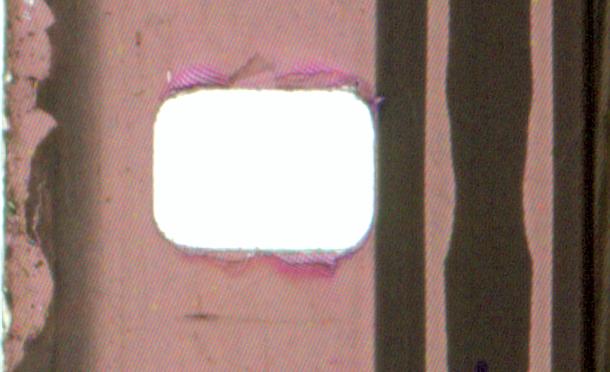


The IMDB listing for Sons of the Sea states it's a black & white movie. In fact it was shot in Dufay Colour, a mosaic screen additive system. While Gone With The Wind and The Wizard of Oz were bathing 1939 film audiences in glorious three-color Technicolor, there were still older processes being used. Dufay Colour, being a laminated mosaic screen additive system, presented difficulties in producing color prints in large quantities. These frames are exceptionally rare. It was most frequently used for medium format color transparencies. Above is a closeup of the film where the laminated mosaic pattern is visible. It covers the entire side of the print, including soundtrack. If the lamination is peeled away, a conventional looking black and white image is seen underneath.
Here are some samples of the film and my attempts to compensate for the ravages of time.
Mosaic screen lamination has taken on a brownish-salmon hue. The nitrate film base is completely transparent as can be seen in the upper right hand portion of the image where the lamination has completely separated
My futzing with the image shows that Messrs Harris and Katz haven't got a major competitor down in Texas.
Let's try to fix up some other samples.
This frame shows the inherent drawback to any form of additive color system, a dark image. This is true whether the color is added via filters in front of the projector lens such as was done in Kinemacolor and Technicolor system 1, or whether the color is added by means of a lenticular or mosaic screen as is the case with Dufay.
Assuming that there were plenty of amps to push through the projector carbons, this is approximately what the color image would have looked like when projected. The sound, with the screen on top, probably wasn't the best in the world.
A scene including a bit of the English countryside gives us a bit better idea of what Dufay Colour looked like.
Working under the assumption that it is totally impossible for me to adjust the color values of the image to be better than they originally were, we can be assured that Dufay Colour looked somewhat better than this.